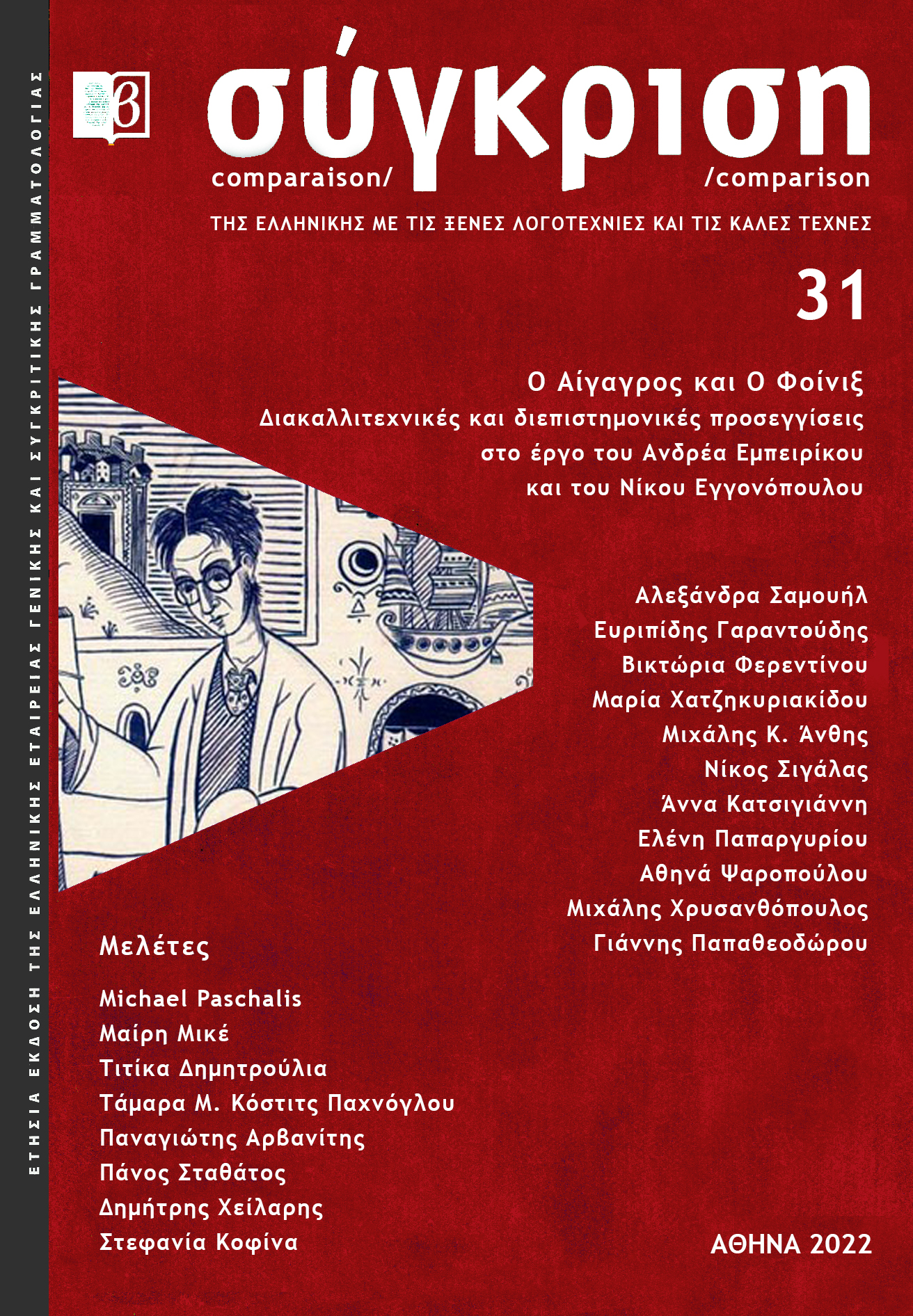Greek fiction and cinema: filmic references, markers and narrative showing? An essay in method.

Abstract
The emergence of film brought forth a new form of narrative literacy based on the moving image. Added to a series of truly seismic changes that mark the early decades of the twentieth century, the birth of this new narrative form –that also became intertwined with the aesthetics of modernism– raised a number of challenges for literary narrative. This essay presents a brief reasoning for the importance of cinema in the approach of twentieth century literature, and centers on the methodological aspects of an intermedial / interarts approach that studies how and why certain literary texts evoke a filmic illusion. The analysis of two prose examples (Alexandros Kotzias’s Antipoiesis Arhis, 1979 and Maro Douka’s Ourania Mechaneke 1999) aims to show how filmic references can vary in their function as well as their form, and how the aforementioned variety is greatly determined by the historical moment of each intermedial encounter, in which social, cultural, aesthetic, literary and filmic tendencies come into play. This review of filmic references in actual novels published in the late twentieth century brings forth a methodological aspect on how we analyze and study the filmic illusion created by a literary text. Filmic references are found in literature throughout the twentieth century. It is only in the last two decades however that they become explicit, thus allowing the reader / critic to identify them as such through the presence of a marker –a marker as defined by Irina Rajewsky in her approach, entails one or more filmic refences that explicitly and clearly point to a certain medium / art form. The obvious lack of markers in most of the examples of “filmic” literature published by 1980, dictates a need for a different way to define filmic references that goes beyond an explicit mentioning of film or its elements. I thus suggest that the study of a literary text in light of to the trope of showing, as defined by Gerard Génette, can be a more reliable indicator of a literary narrative that engages film in its tropes.
Article Details
- How to Cite
-
Φραγκούλη Ν. (2023). Greek fiction and cinema: filmic references, markers and narrative showing? An essay in method. Comparison, 32, 316–330. Retrieved from https://ejournals.epublishing.ekt.gr/index.php/sygkrisi/article/view/35558
- Issue
- Vol. 32 (2023)
- Section
- Articles

This work is licensed under a Creative Commons Attribution-NonCommercial-ShareAlike 4.0 International License.
Authors who publish with this journal agree to the following terms:
- Authors retain copyright and grant the journal right of first publication with the work simultaneously licensed under a Creative Commons Attribution Non-Commercial License that allows others to share the work with an acknowledgement of the work's authorship and initial publication in this journal.
- Authors are able to enter into separate, additional contractual arrangements for the non-exclusive distribution of the journal's published version of the work (e.g. post it to an institutional repository or publish it in a book), with an acknowledgement of its initial publication in this journal.
- Authors are permitted and encouraged to post their work online (preferably in institutional repositories or on their website) prior to and during the submission process, as it can lead to productive exchanges, as well as earlier and greater citation of published work (See The Effect of Open Access).



